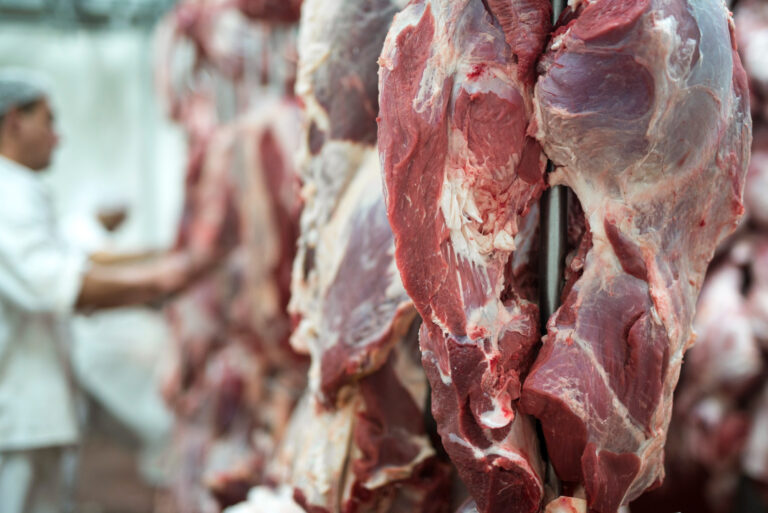Meat
Brazilian beef. Brazilian livestock continues to grow, contributing significantly to the national economy. In 2019, livestock represented 8.5% of the Brazilian GDP. The majority (76 percent) of beef produced in Brazil is still consumed on the domestic market, but exports have steadily increased, with important destinations such as China, Hong Kong, Egypt, Chile, the United States and the EU.
China remains the main market for Brazil. In the year to August, 530,000 tons of beef were shipped to China, a surprising increase of 145% compared to 2019, accounting for 48% of all Brazilian beef exports. A contributing factor to this growth is attributed to the strong demand in China due to the protein deficit caused by African Swine Fever (ASF) and the growing purchasing power of the Chinese middle class. However, other major export markets have also increased their imports of Brazilian beef, including Saudi Arabia, the Philippines and Singapore.
For Brazil, 2020 was characterized by a more restricted supply of cattle and record volumes of beef exports. Cattle slaughter (only plants inspected by the federal government) for the year up to August fell 10% from 2019 levels, while beef exports exceeded 1.1 million tonnes of shipped weight (SWT) in the same period, an increase of 16% in relation to the previous year.
USDA projections indicate that Brazilian beef exports in 2020 may exceed 2.5 million tonnes equivalent to the carcass weight (cwe), which would represent about 24% of world beef exports. Looking at 2021, Brazilian beef exports are expected to increase 8%, to reach 2.7 million tons.
An important part of the evolution of Brazilian cattle ranching took place within Brazilian ranching properties, with a strong participation of various segments of society. Engaged in the search for productivity, quality and sustainability, institutions of science and technology, education, industry, producer associations, non-governmental organizations, among other actors, make up an extremely active and often coordinated group, with initiatives that greatly contribute to increases in quality inside and outside the gate. The search for improving the quality of the meat is increasingly stimulated, whether by the slaughterhouse industry or by the governmental initiative, to pay attention to the demands of the consumer market.
Each country has its own production method, which is guided by the demand of the consumer market and specific characteristics of each production system, for example, the meat cuts in Brazil are different from its main exporting competitors, USA and Australia. One of the reasons for this difference is the high cost of labor, in these last two countries, which leads to greater use of machines and consequently less specific cuts. Brazilian slaughterhouses use more manual cuts than Americans, processing fewer carcasses a day.

